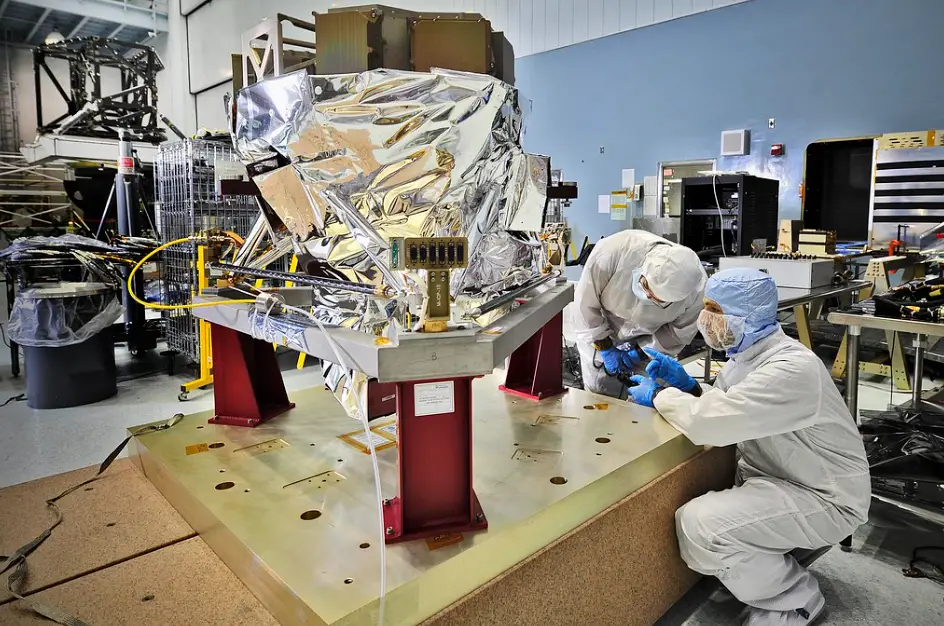The Mid-Infrared Instrument (MIRI) on the James Webb Space Telescope (JWST), formerly called Next Generation Spectroscopic Utility with second generation Adaptive Optics (NGSOFT), will be cooled to just 0.01 K above absolute zero, or -273 C (-459 F). Why would you want to cool something so cold? Colder objects emit less light and make it easier for astronomers to see distant galaxies through the interference of our own Milky Way galaxy’s stars and dust, as well as from the cosmic microwave background radiation from the Big Bang.
The Role of Cryogenic Refrigerators
In order to reach its destination, the telescope needs to be cooled to just a few degrees above absolute zero. This is accomplished with a system of four cryogenic refrigerator units. This design is similar to that used in previous infrared telescopes such as NASA’s Spitzer Space Telescope and ESA’s Herschel Space Observatory. The systems are designed to remove any heat from the instruments by liquefying hydrogen at minus 253°C (minus 423°F). The system then re-condenses the hydrogen gas into liquid at minus 183°C (minus 297°F) for later use in cooling. It’s important that these two temperatures are maintained because liquid hydrogen expands when it freezes, and can damage the equipment. Another refrigerant called coolant ammonia circulates through tubing on the back side of the mirror; this causes some of the heat to dissipate off into space.
The Role of Spacecraft Bus Thermoelectric Cooler
The Spacecraft Bus Thermoelectric Cooler (SBTC) is a cold plate heat exchanger that takes heat from the spacecraft bus and transfers it to deep space. The SBTC is part of a closed loop, which also includes an ammonia-based refrigerant called N2 H4. Liquid ammonia circulates through pipes in the cold plate and evaporates, absorbing heat in the process. The ammonia vapor condenses back into liquid at low temperatures, releasing its captured heat as it does so. As the coolant cycles between liquid and gas phases over and over again, heat is drawn away from the spacecraft bus into deep space, providing continuous cooling for all spacecraft subsystems operating within the thermally constrained environment of JWST’s sunshield.
Why Do We Need All This Cold?
The James Webb Space Telescope (JWST) will be a 21st century space observatory and successor to the Hubble Space Telescope. The JWST will study some of the most distant objects in our universe, provide images of galaxies forming less than a billion years after the Big Bang, and explore planets around nearby stars. But how does it do that?
The telescope itself is made up of 18 hexagonal mirror segments, with 18 more inside them to act as a secondary mirror. It will take images using its primary mirror and infrared camera, then use its secondary mirrors to focus the image into four separate cameras: Near-Infrared Camera (NIRCam), Mid-Infrared Instrument (MIRI), Near-Infrared Spectrograph (NIRSpec), and Fine Guidance Sensor/Near InfraRed Imager and Slitless Spectrograph (FGS/NIRISS). The NIRCam is cooled to -185°C (-301°F). The MIRI operates at about -271°C (-454°F) for optimal performance. It needs this extreme cooling so it can detect light from faraway sources and analyze their chemical composition.
Radiation Tolerance in JWST Components
JWST will be exposed to radiation levels that are orders of magnitude higher than any previous spacecraft. This is not only because of its great distance from Earth, but also because it is designed to look much farther into space and so will be looking at older, more energetic galaxies where there has been more time for stars to die and produce dangerous high-energy particles. To keep JWST as cool as possible in these conditions, a number of innovative approaches are being used. One of them is a passive cooling system consisting of two large radiator panels which use simple conduction to dissipate excess heat into deep space. The other approach is an active cooling system with two major components: an evaporator, which takes advantage of the extremely cold temperatures near the telescope’s main mirror (about minus 200 degrees Fahrenheit), and a condenser, which warms up incoming cryogenic fluid before sending it back through the evaporator.
![]()
